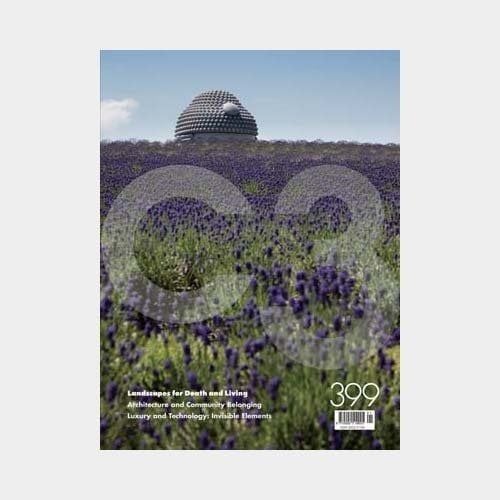
C3 - LANDSCAPE FOR DEATH AND LIVING / ARCHITECTURE AND COMMUNITY BELONGING (
Karton Kapak
240 Sayfa
300 mm X 225 mm
Architecture and Community Belonging
Architecture and Community Belonging_Ana Souto
– Boca Sur Civic District_Smiljan Radic
– The Heart in Ikast_C.F. Møller Architects
– Kult – Westmünsterland Cultural and Historical Center_Pool Leber Architekten
– Águeda Arts Centre_AND-RÉ
– Congress Center of the Haute Saintonge_TETRARC
– Yuanlu Community Center_Challenge Design
Luxury and Technology-Showrooms and Flagship Stores
Luxury and Technology: Invisible Elements_Silvio Carta
– Renault Symbioz House 33_Marchi Architectes
– Franz Kraler Showroom in Dobbiaco_Studio Marastoni Architetti
– Céline Flagship Store_Valerio Olgiati
– UR Shanghai Flagship Store – Canyon_DOMANI
– Pitaro Office and Furniture Showroom_Baranowitz & Goldberg Architects in-co with Pitsou Kedem Architects
Landscapes for Death and Living
Landscapes for Death and Living _ Alison Killing
The challenge of designing for the architecture of death, according to architectural historian Ken Worpole is that it ‘has both to remind us of the longevity of memory and human culture, as well as the brevity of the individual human life.’ In these four cemetery projects the design of the surrounding landscape and the integration of that into the building are common strategies for responding to this question. What is striking finally is how full of life these buildings are. The plants and landscape design are key to the experience, while these places are also designed very much around the visitors and their needs. The end result is a series of places that are about the dead, but for the living and full of life.
Architecture and Community Belonging
Architecture and Community Belonging _ Ana Souto
The architecture scene of the last few decades has been monopolized by buildings that do not sit comfortably within their contexts: the main goal of these structures was to rebrand cities, regions and even countries to the expense of diluting local identities. Moreover, these iconic insertions in the built environment did not respond to the needs of the local communities, but to the expectations of temporary users. …… These projects reveal a number of commonalities, not only as a result of their civic manifestoes, but also from a design point of view: a careful selection of vernacular and familiar qualities, shapes and scales are combined with contemporary approaches to materiality, lighting and construction. Ultimately, they have all become social landmarks, anchors that support local communities and their contexts.




